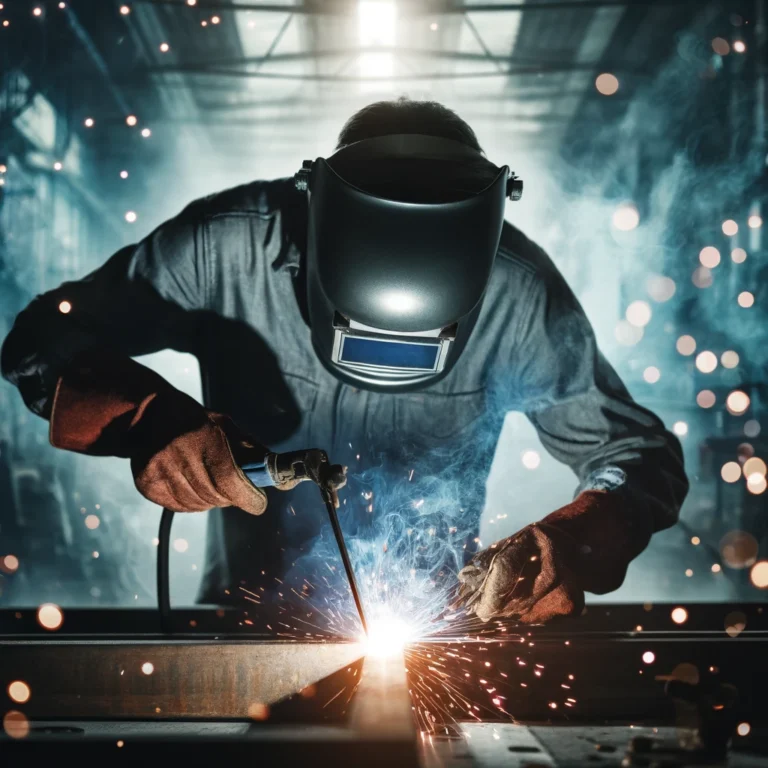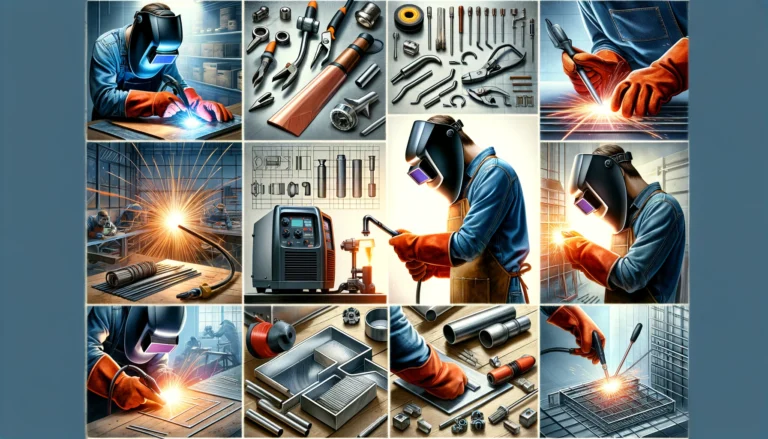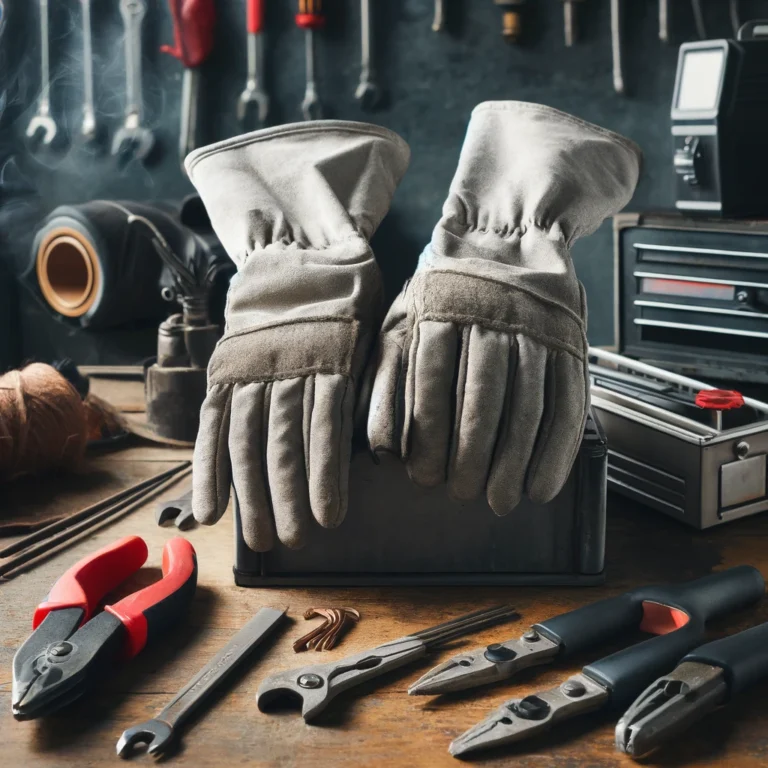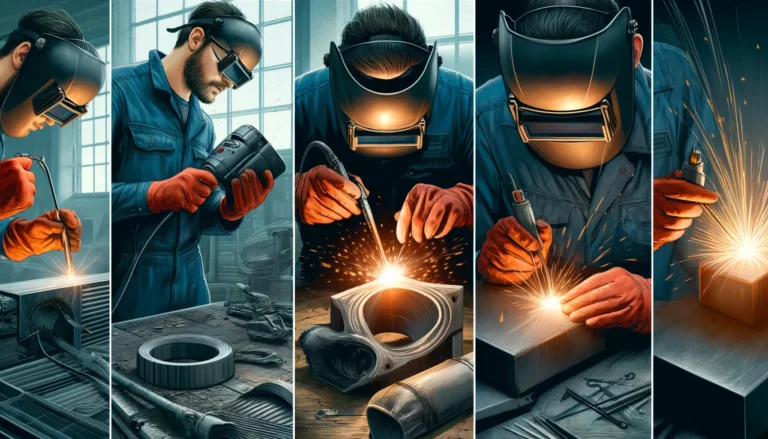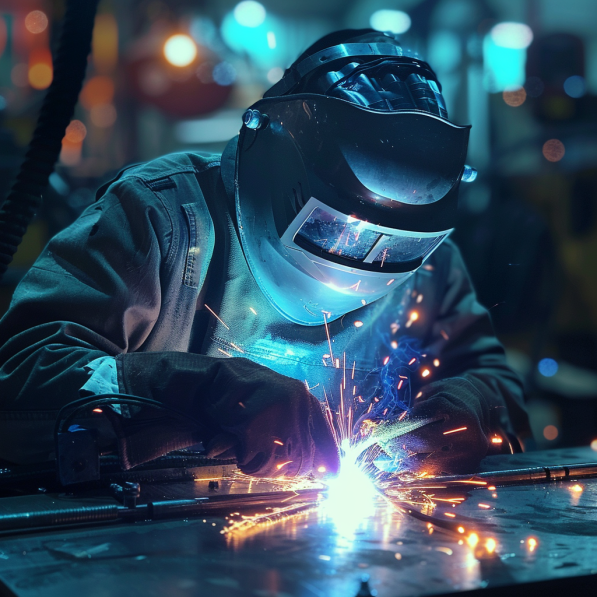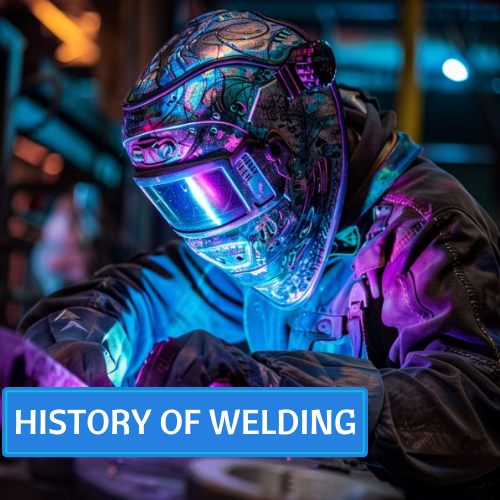
The History Of Welding
In the present day, the metal formation would be impossible without welding; moreover, where did this innovation begin? Who found it, and how has it changed it throughout the way of the welding journey? Here is some information to the most of the concerns, dealing with the main innovations in metal orientation. In this article, we will discuss the history of welding.
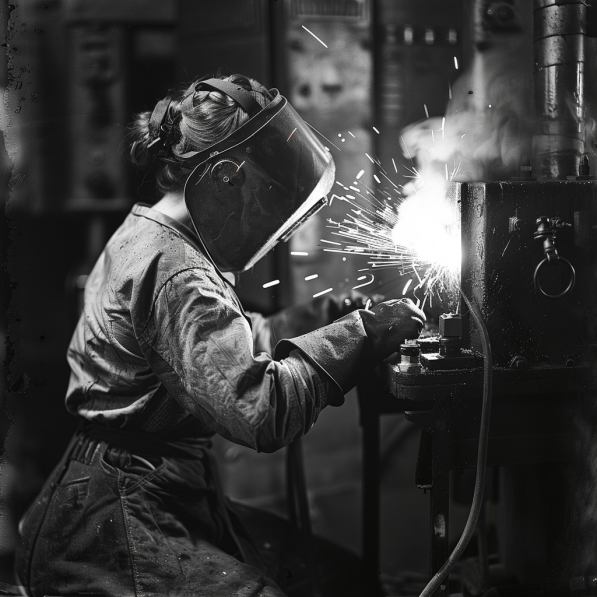
When Did Welding Originate?
As you observe around you, welding has been part of ours daily routine for almost a year ago. We can accept it existed in some of its forms as far back as the Iron Age and the Bronze Age. There is proof that the Egyptians figure out how to weld iron pieces together, and we have estimated little gold boxes with pressure-welded lap joints, about more than 2,000 years.
In any case, the welding standard during the Middle Ages was a straightforward kind of welding that normally elaborates two metal pieces together under heat until they take one form. As far as our concerned, traditional welding didn’t show up until the nineteenth century.
Who Invented Welding?
No one estimates the development of welding. Probably the most evident inventions come customary welding happens as in the 1800s. Sir Humphry Davy invented the electric bend between the two carbon anodes using a battery. In 1836, Edmund Davy found acetylene. In any of these cases, the ideas we discussed as welding today didn’t emerge until 1881.

History Of Welding Timeline
Welding Advancements Steps During The Ages
Welding can follow its notable advancement back to old ages; the most evident event in the history of welding comes from the Bronze Age. Little gold round boxes were made by pressure welding lap joints together. It assessed that lap had been completing over 2,000 years back. During the Iron Age, the Egyptians and people of local areas in the eastern Mediterranean territory figure out how to weld iron pieces together. Around 1000 B.C, discoveries in the weld of two-piece iron.
1: During the 1800s
Edmund Davy of England was credited with the revelation of acetylene in 1836. Sir Humphrey Davy, in 1800, was formatted of an iron bending between two carbon anodes by utilizing a battery. During the end of the 1800s, gas welding and cutting were created. With the carbon circular segment and metal curve, Bend welding was developed, and opposition welding turned into a reasonable joining measure.
Auguste De Mertens, working in the Cabot Laboratory in France, used the warmth of a curve to join lead plates to the batteries in the year 1881.
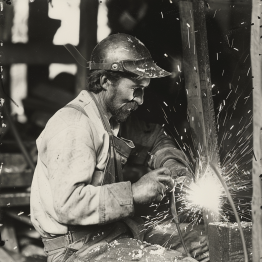
In 1890, C.L. Casket of Detroit was honored with the primary U.S. patent for a carbon circular segment welding through a metal cathode. This method of the metal dissolved from the anode conveyed across the circular segment to store filler metal in the joint to make a weld. In 1885, N.G. Slavianoff, a Russian, introduced a similar thought of welding metal across a circular segment and creating the metal in a form.
2: During the 1900s
In around 1900, Strohmenger presented a covered metal anode in Great Britain. There was a conversion of dirt or lime through the carbon circular segment. However, it gave a more realistic circular element. Oscar Kjellberg of Sweden invented a covered anode during the time of 1907 to 1914. At that time, Stick anodes were formatted by plunging short lengths of uncovered iron wire in thick combinations of carbonates and silicates and permit to covering the iron to let the mixture dry.
Then, obstruction welding was invented, including spot welding, crease welding, projection welding, and blaze butt welding. Elihu Thompson began welding; his licenses were dated 1885-1900. In 1903, a German named Goldschmidt tricky of the thermite welding was first used to weld railroad rails.
Gas welding and cutting culminated during the 1900s; before 1900, hydrogen and coal gas were utilized with oxygen. The Second Great War brought a tremendous interest for combat hardware formation, and welding was formed into an incredible administration. Numerous organizations jumped up in America and Europe to produce welding machines and cathodes to meet the world’s necessities.
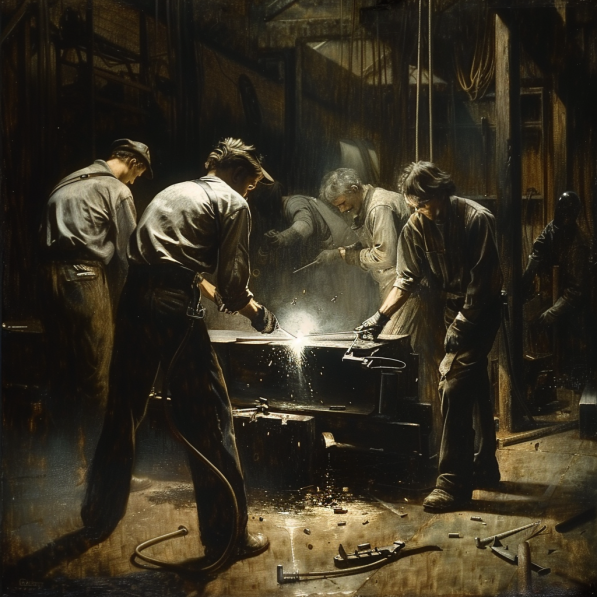
In 1920, programmed welding was on peek. It used uncovered terminal wire, worked on direct current, and utilized curve voltage as the premise of controlling the feed rate. Programmed welding developed P.O. Nobel of the General Electric Company. It used to establish worn engine screws and worn crane wheels. It was additionally utilized by the auto business to create back pivot lodgings.
During the 1920s, different kinds of welding anodes had created. There was extensive contention during the 1920s about the upside of the heavily covered bars versus light-covered bars. The coated anodes, made by expelling, were created by Lang troth and Wandered of the A.O. Smith Company, and their organization utilized them in 1927. In 1929, Lincoln Electric Company delivered expelled terminal poles that were offered to the general society. By 1930, covered anodes broadly used. Welding cathodes created that necessary better weld metal, which expanded the utilization of protected terminals.
During the 1920s, there was an extensive exploration in protecting the bend and the weld methods by remotely applied gases. The oxygen and nitrogen gases’ contact with the liquid weld metal caused weak and sometimes permeable welds. Alexander and Langmuir give new methods using the hydrogen chambers as a welding environment. They used two cathodes, beginning with carbon anodes yet later changing to tungsten terminals. Then hydrogen changed into atomic hydrogen in the circular segment. This circular segment delivered half again as much warmth as an oxyacetylene fire. Then turned into the atomic hydrogen welding measure. Atomic hydrogen never got that much attention, yet it was utilized during the 1930s and 1940s for extraordinary welding and later on for welding device preparation.
3: During the 1930
Stud welding was created in 1930 at the New York Navy Yard, explicitly for joining wood decking over a metal surface. Stud welding got well known in shipbuilding and the development of building sites.
Then the programmed welding that became well-known was the lowered curve welding measure. Then under powder or covered curve welding measure was invented by the National Tube Company for a line plant at McKeesport; Rubin off projected the welding in the 1930s and was subsequently offered to Linde Air Products Company, renamed Union melts welding. Lowered bend welding was utilized during the projection of development in 1938 in shipyards and arms plants. It is quite possibly the most gainful welding cycle and stays well-known during today’s market.
4: During the 1960
Another way was to utilize ideal gas with the modest quantities of oxygen that gave the shower type curve move. It got famous in the mid-1960s—a new way for the utilization of beat current. The current is changed from a high to a low worth at more than once the line recurrence.
After the appearance of CO2 welding in the market, a variety using an uncommon terminal wire was created. This wire, portrayed as an inside-outside terminal, was cylindrical in cross-segment with the fluxing specialists within. The cycle was called Dual shield, which showed the gas used just as the gas delivered by the transition in the center of the wire for curve protecting. This method, created by Bernard, was declared in 1954; however, it was delivered in 1957, when the National Cylinder Gas Company introduced it.
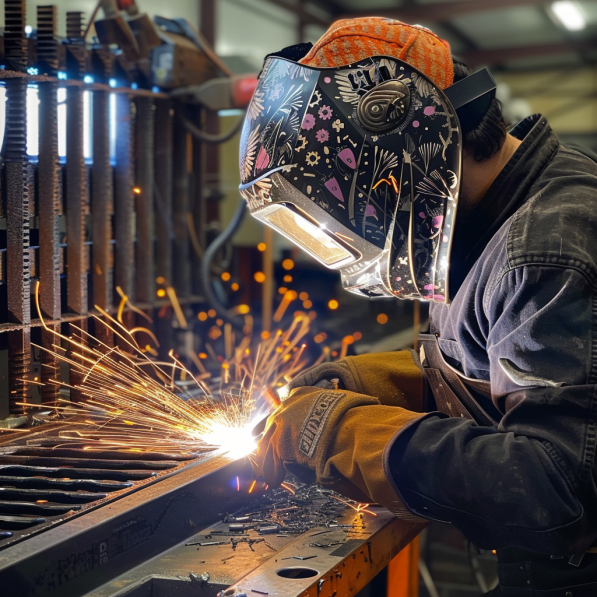
In 1959, an inside-outside anode had delivered that didn’t need outer gas control for the welding purpose. The drawback of controlling the gas is the interaction of flame all the time. This method was named Inner-shield.
The electro-slag welding was reported by the Soviets at the Brussels World Fair in Belgium in 1958. It had been utilized in the Soviet Union since 1951, and most of the utilizing work was done in the United States by R.K. Hopkins, who conceded licenses in 1940. The Hopkins method was never used by and large for joining. The exchange has culminated, and gear had formated at the Paton Institute Laboratory in Kyiv, Ukraine, and the Welding Research Laboratory in Bratislava, Czechoslovakia. The primary creation use in the U.S. was at the Electromotive Division of General Motors Corporation in Chicago, known as the Electro-forming measure. It declared in December 1959 for the creation of welded diesel motor squares. The methods and its variety of welding utilized a tube, which is using for welding thicker materials.
The Arcos Corporation presented another upward welding technique, called Electro-gas, in 1961. However, it used hardware produced for electro-slag welding but utilized a transition cored cathode wire and a remotely provided protection to the gas. It is an open bend measure since a slag shower. A more current advancement utilizes self-safeguarding cathode wires, and a variety uses strong wire. These techniques permit the welding of more thin materials that can be welded with electro-slag interaction.
Gage developed plasma circular segment welding in 1957. This method utilizes a contracted bend or a curve through a hole, making circular segment plasma with a higher temperature than the tungsten circular segment. It’s used for metal splashing, gouging, and cutting.
The electron bar welding measure, which utilizes an engaged light emission as a warmth source in a vacuum chamber, was created in France. J.A. Stohr of the French Atomic Energy Commission unveiled the primary revelation of the cycle on Nov. 23, 1957. In the United States, car and airplane motor ventures are the significant clients of electron pillar welding. These are some of the backgrounds of welding, how it formed, process, and the formation of the new methods. However, these technologies and procedures are in use in the current world.
Latest Technologies Used In The Welding Process
Technologies Used in The Welding Process
Grinding welding, which utilizes rotational speed and strain to give rubbing heat, was created in the Soviet Union. It is a particular method with applications just where a thick comparative part volume is to be welded, given the underlying cost for the tool. This cycle is called dormancy welding.
Conclusion
Consequently, we have shared the detailed welding history with you. We have gone through the ancient welding era and present also. Now, let us put some light on the future horizons of welding.
According to us, the future of welding would be more intelligent with the integration of AI and computer systems. All the welding process might be more accurate, and automated. The required welding material production will also become autonomous. All of these aspects will open the door of many opportunities.
